A solid material is supplied heat at a constant rate. The temperature of material is changing with heat input as shown in the figure. What does the slope of DE represent ?
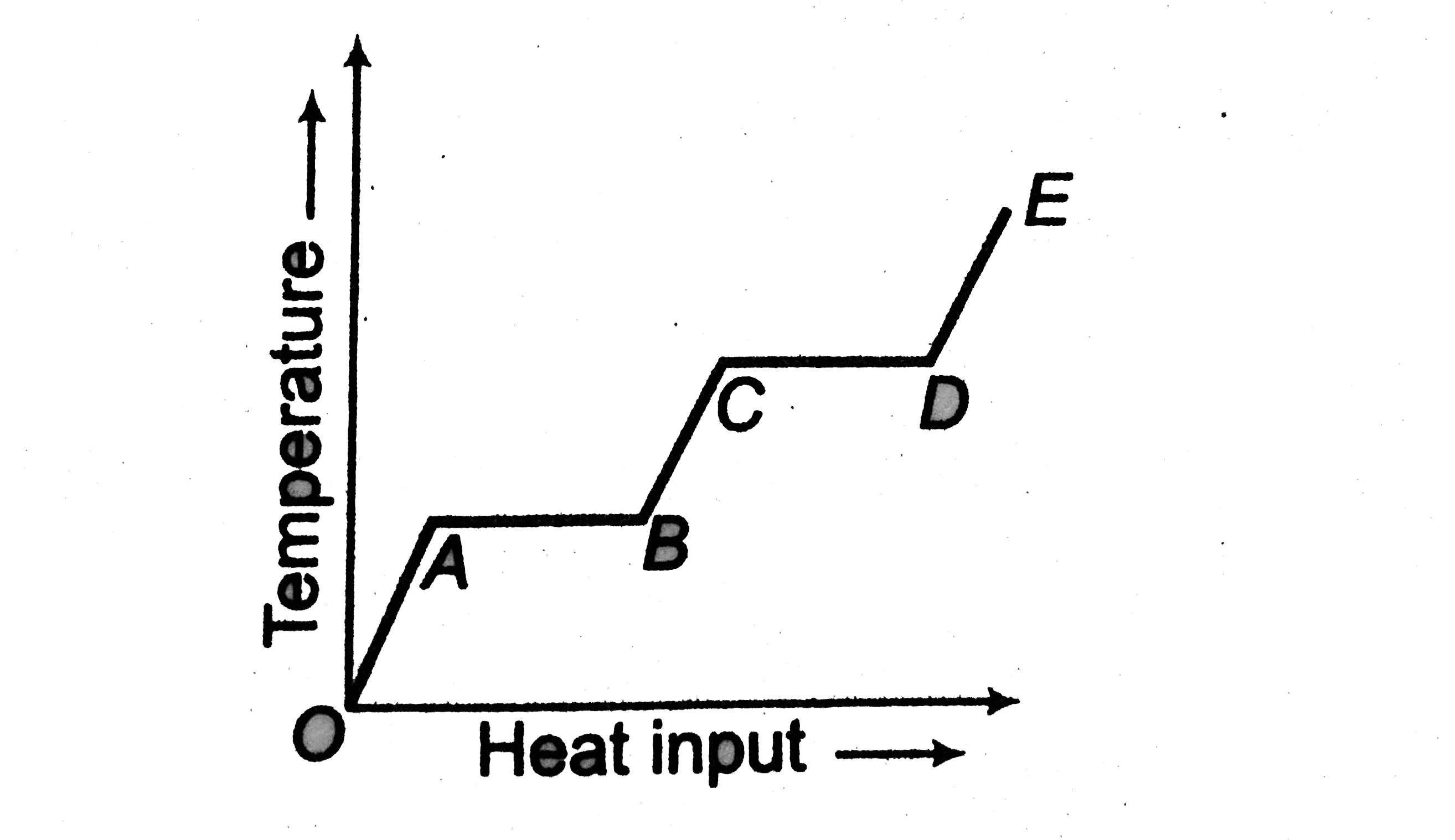
latent heat of liquid
latent heat of vapour
heat capacity of vapour
inverse of heat capacity of vapour
The correct Answer is:D
ΔQ=mcΔT
Slope of inclined line ΔQΔT=1mc = 1/(Thermal capacity)
Topper's Solved these Questions
- BOOK - DC PANDEYCHAPTER - CALORIMETRY AND HEAT TRANSFEREXERCISE - Check points 16.320videos
CALORIMETRY AND HEAT TRANSFER
- BOOK - DC PANDEYCHAPTER - CALORIMETRY AND HEAT TRANSFEREXERCISE - Check points 16.425videos
CALORIMETRY AND HEAT TRANSFER
- BOOK - DC PANDEYCHAPTER - CALORIMETRY AND HEAT TRANSFEREXERCISE - Check point 16.110videos
CALORIMETRY AND HEAT TRANSFER
- BOOK - DC PANDEYCHAPTER - CALORIMETRY & HEAT TRANSFEREXERCISE - Level 2 Subjective14videos
CALORIMETRY & HEAT TRANSFER
- BOOK - DC PANDEYCHAPTER - CENTRE OF MASSEXERCISE - Medical entrances gallery27videos
CENTRE OF MASS
Similar Questions
A solid material is supplied with heat at a constant rate. The temperature of the material is changing with the heat input as shown in the graph in figure. Study the graph carefully and answer the following questions:
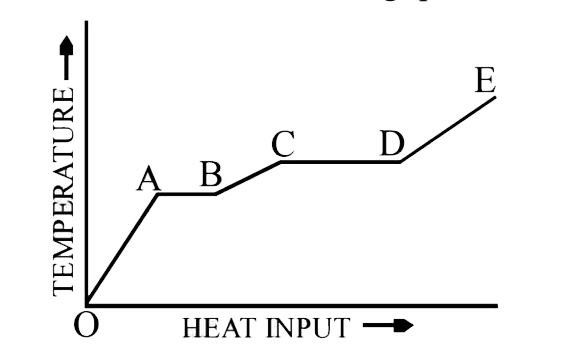
(i) What do the horizontal regions AB and CD represent?
If CD is equal to 2AB, what do you infer?
What does the slope of DE represents?
The slope of OAgtthe slope of BC. What does this indicate?View SolutionHeat is supplied to a ice at a constant rate Temperature variation with time is as shown in figure. Then –
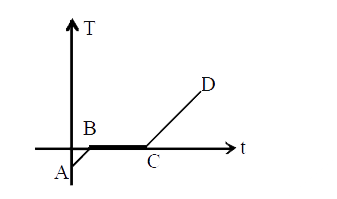 View Solution
View Solution
Knowledge Check
- Question 1 - Select One
When we raise the temperature of a body, the molecules and atoms move with greater kinetic enery. Assume that "the temperature" is the manifestation of only the kinetic energy is atomic and subatomic levels and no mass change (excess//defect) occurs due to heating. Now a solid material is supplied with heat at a constant rate. The temperature of the material is changing with the heat input as shown in the graph. BC and DE are parallel to the Heat-input axis
In BC and DE
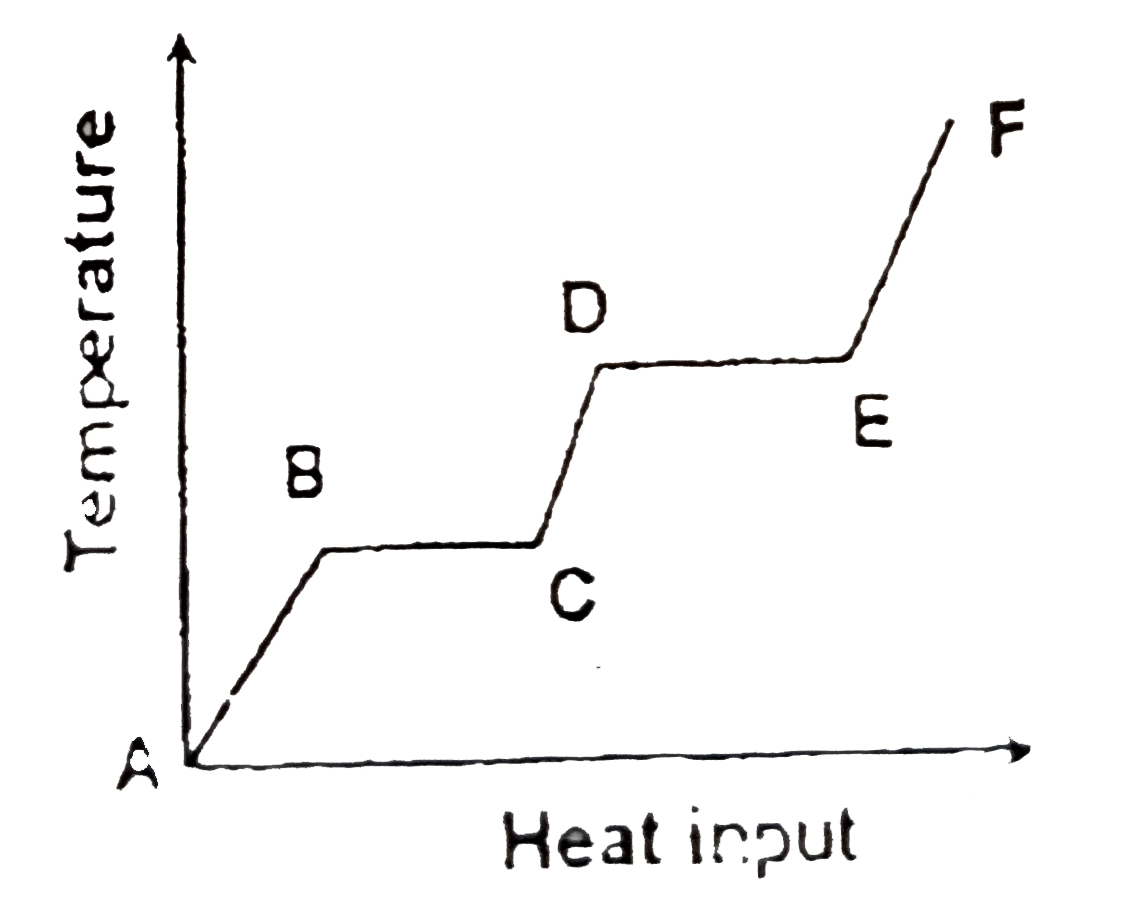 Akinetic energy increasesBpotential energy increasesCkinetic energy decreasesDpotential energy remains constant
Akinetic energy increasesBpotential energy increasesCkinetic energy decreasesDpotential energy remains constant - Question 2 - Select One
When we raise the temperature of a body, the molecules and atoms move with greater kinetic enery. Assume that "the temperature" is the manifestation of only the kinetic energy is atomic and subatomic levels and no mass change (excess//defect) occurs due to heating. Now a solid material is supplied with heat at a constant rate. The temperature of the material is changing with the heat input as shown in the graph. BC and DE are parallel to the Heat-input axis
In AB, CD and EF, the energy of the system increases. Here "energy" refers to
 Akinetic energyBpotential energyCboth kinetic and potential energyDnone of these
Akinetic energyBpotential energyCboth kinetic and potential energyDnone of these - Question 3 - Select One
When we raise the temperature of a body, the molecules and atoms move with greater kinetic enery. Assume that "the temperature" is the manifestation of only the kinetic energy is atomic and subatomic levels and no mass change (excess//defect) occurs due to heating. Now a solid material is supplied with heat at a constant rate. The temperature of the material is changing with the heat input as shown in the graph. BC and DE are parallel to the Heat-input axis
In which of the following phase the assumption made in the above comprehension is most precise ?
 AsolidBliquidCgasDnot predictable
AsolidBliquidCgasDnot predictable
A source of heat supplies heat at constant rate to a solid cube. The variatiion of the temperature of the cube with heat supplied is shown in figure. The portion DE of the graph represents conversion of
 View Solution
View SolutionEqual masses of two liquids A and B contained in vessels of negligible heat capacity are supplied heat at the same rate. The temperature-time graphs for the liquids are shown in the figure. If S represents specific heat and L represents latent heat of liquid, then
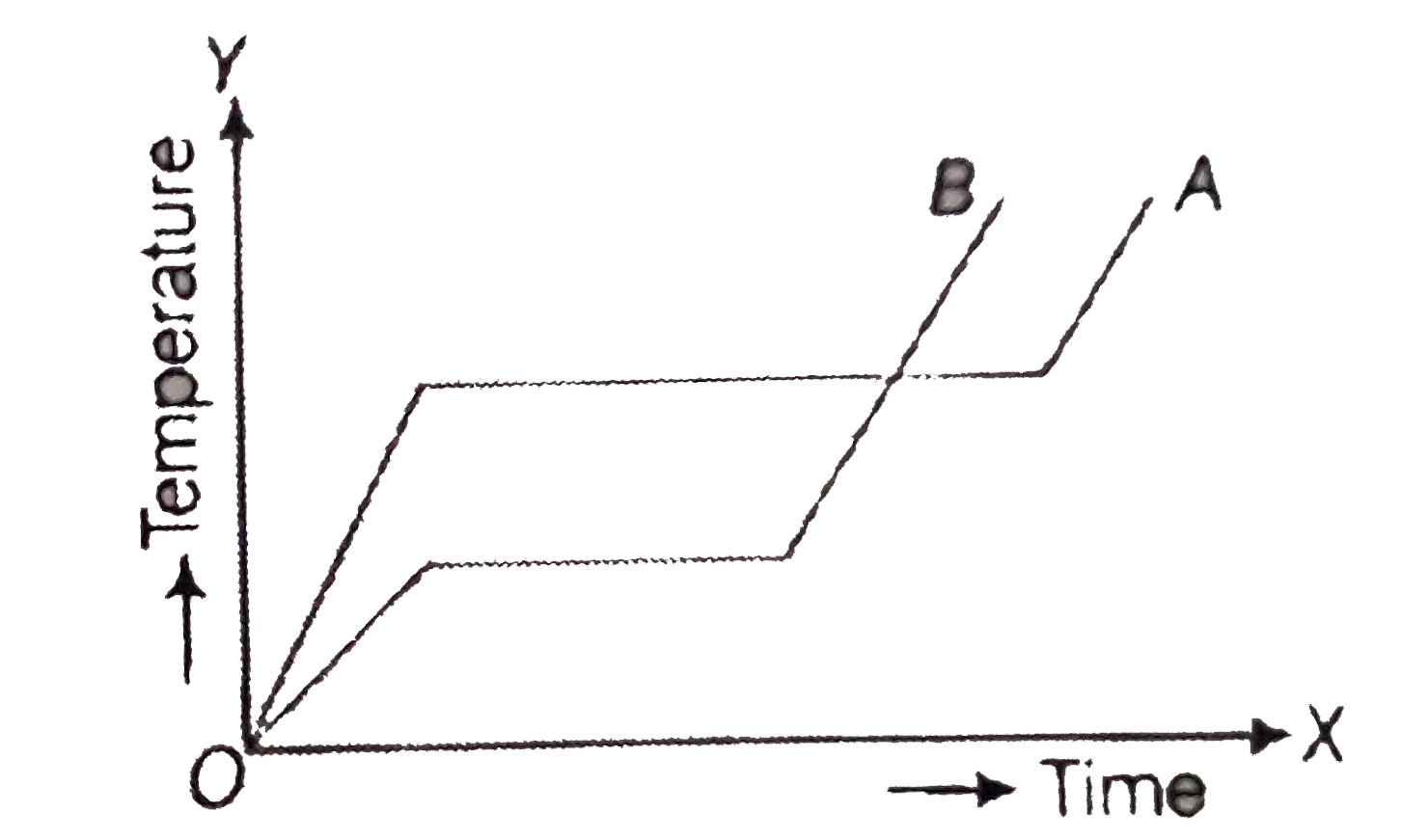 View Solution
View Solution
A solid material is supplied with heat at a constant rate. The temperature of the material is changing with heat input as shown
(i) AB: change of state from solid to liquid.
CD: change of state from liquid to vapour
(ii) When CD=2AB, i.e., latent heat of vapourization is twice the latent heat of fusion of the substance.
(iii) The reciprocal of slope of DE represents the heat capacity of vapour state of substance .
(iv) If slope of OA>slope of BC, i.e., specific heat of liquid state is greater than specific heat that of solid state.View SolutionSolid materials are heated by -
View SolutionA solid substance is at 30∘C . To this substance heat energy is supplied at a constant rate. Then temperature versus time graph is as shown in the figure. The substance is in liquid state for the portion (of the graph)
 View Solution
View Solution
